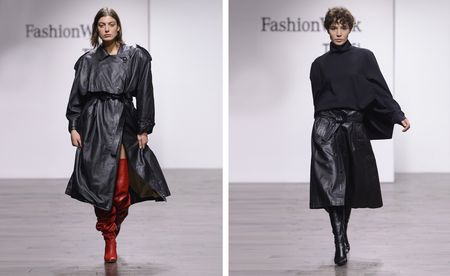Rebel sell: critic Alexander Fury ponders the power of the post-catwalk generation
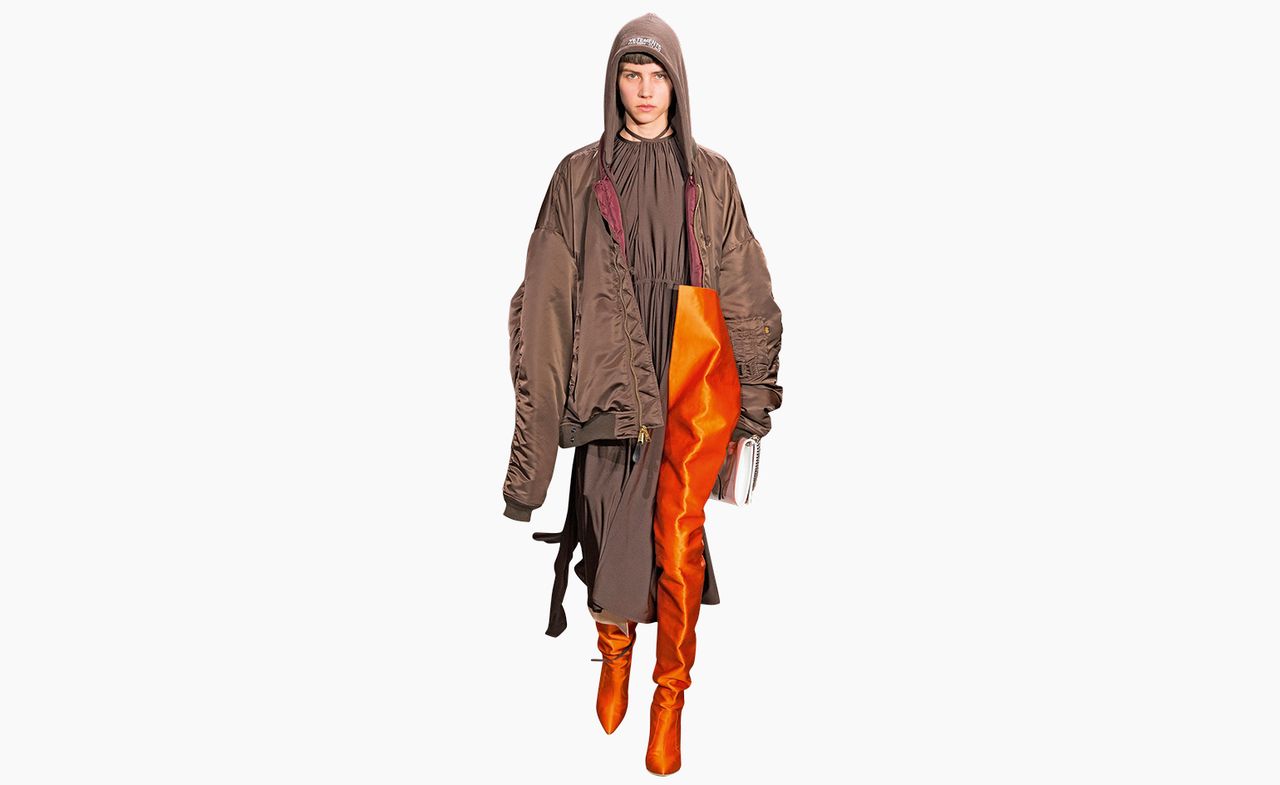
Alexander McQueen was barely a year out of college when he began to court outrage and attention with his first fashion show in 1993. It’s a path many have followed since.
What’s interesting about a new wave of talent is that the designers aren’t using
the catwalk to generate buzz and business.
They seem to have successfully skipped
an evolutionary step. Many customers’ first encounter with the cutting-edge Parisian label Vetements – currently whipping the fashion industry into a frenzy and being ripped off at every level – was in stores. Ditto, labels such as Wanda Nylon, Vejas and Wales Bonner. The first, founded in 2012, didn’t show for three years, while the other two show low-key and small-scale.
These are just a few of the growing breed
of designer labels that are rewriting the brand-building rule book. And what’s more,
they seem to be doing it at exactly the
wrong time, running against the prevailing winds. US department stores are reporting slumps and cutting back – a symptom
of a larger malaise in a fashion retail environment marked by high-profile stock crashes, price slashes, and dramatic spikes
of success and failure in the fortunes of major international brands. It’s at times
like these when, traditionally, young designers go bust.
Without the pull of a well-established brand, the chances of survival seem
slim. But the new breed are doing more
than survive. Against all odds, these
fashion small fry are carving themselves
a profitable niche. Vetements – remarkably, given its reputational heft, established only in 2013 –
is the standard-bearer of the movement.
When Balenciaga chose as its new creative director Demna Gvasalia, the bearded, buzzcut titular head of Vetements (it’s run as a collective, but was established with Gvasalia’s seed capital), the reaction wasn’t ‘lucky him’ but ‘lucky them’. Vetements’ business is small compared with Balenciaga –
200 stockists, whereas Balenciaga operates over 100 stand-alone boutiques worldwide and has a thriving wholesale business besides. But Gvasalia’s creative clout is huge.
So what are these labels getting so right? ‘I think the common link and what drew me to all these brands was their confidence,’ says Natalie Kingham, the fashion buying director of MatchesFashion.com. Kingham was an early supporter of Vetements,
a relationship that has resulted in a number of design exclusives.
Within two seasons,
in response to customer enthusiasm,
the retailer counted Vetements alongside Dolce & Gabbana, Saint Laurent and Gucci
in terms of its wholesale spend. Kingham
also invested early in the brand Off-White (headed by Virgil Abloh, Kanye West’s creative consultant), young London label Marques’Almeida and Wales Bonner. ‘They have a very clear aesthetic and original point of view, and also really understand who they are talking to,’ Kingham adds.
That pinpoints two important factors
in the rise of these labels: engagement with an audience and an instantly identifiable signature, a distinct point of difference. The internet – as a point of sale, and
a point of contact – has proved vital for
the new breed of brands. ‘Online has revolutionised everything for younger brands,’ says Kingham. ‘It means we have
a global audience.’ Matches is also a bricks and mortar retailer, but 85 per cent of
its sales (around £130 million annually) are generated online.
The growth of online shopping seems to lead to more adventurous buying: it’s easier to find a market for the cultish appeal of a Vetements hoodie or Marques’Almeida denim if you have a global audience. ‘We can be closer to our girls and our clients in general,’ says Marta Marques of her brand’s shop and online presence. ‘It didn’t start that way; it started with girls walking into the studio to get clothes they were obsessed with.’ Now they can buy
them from the comfort of their own home.
Skilled use of social media has also been key to the success of these labels. ‘Today, with Instagram and the internet, it’s so scary sometimes how fast things can go,’
says Gvasalia (Vetements boasts 1.1 million followers on Instagram). ‘But I think it’s really a tool, if you use it in the right way.’ Nevertheless, you can’t build a following and successfully engage without something fresh and distinctive to offer.
It is also clear that more discerning consumers are looking beyond what retailers call superbrands – luxurious, sure, but decidedly mass-market, with multiple stores and a slew of product. Pieces are produced in thousands; even archetypal symbols of exclusivity, like a polished crocodile handbag, can be purchased in boutiques in Kuwait, Korea and the Kutuzovsky Prospekt in Moscow. The big brands are now producing one-off s
or limited editions, in ever-decreasing numbers, to add a new sense of exclusivity.
But the work of young designers is truly exclusive – hand-finished, sometimes made in-house, with limited runs of fabrics and trimmings – not just engineered to seem so. Johanna Senyk, the founder of Wanda Nylon, finds it easy to pinpoint her label’s position, its benefits and the challenges it faces.
‘In retail, we sell between Balenciaga
and Azzedine Alaïa,’ she says, delineating both Wanda Nylon’s aesthetic (clean, streamlined) and the price point (in a word: high).
‘But nobody knows who we are. We have no perfume, we sell no bags, we have
no cosmetics, no advertising. It means we have to have better quality, cheaper, with more interesting design to have a chance to be here. The challenge for us is much greater than for big brands.’ And the handiwork in
26-year-old Grace Wales Bonner’s clothes –
diamanté and thread embroideries, sometimes further embellished with puka shells – is literally like nothing else, because each accident of nature (in shell, or hand) makes the garment a one-off.
Of course, it isn’t all about embroidery and delicate hand-craft: Vetements is more likely to chop up old French police sweaters or tourist T-shirts for its clothes; Marta Marques and Paulo Almeida do a great line in chewed-up-looking denim with fraying edges. Indeed, few of these designers’ clothes look alike, but they share a sensibility. Fiercely independent, they
offer something off fashion’s current
well-worn track.
Often, there’s a focus on specific
areas: see Marques’Almeida’s denim and Vetements’ hooded sweatshirts. Wanda Nylon built its reputation on rainwear, albeit sexually charged, with a hint of Helmut Newton fetishism. Senyk made
her first samples from a department-store shower curtain, spinning the idea out into a full but focused range. ‘It’s easy when people know which box to put you in. It was part of my strategy, to enter with something clear,’ she says. ‘And it succeeded. The first season, we had something like 40 or 45 stores.’
Likewise, Vetements boasted 27 stockists after just one collection, and Gvasalia says he approaches his work in a similar way to Senyk. ‘It’s really this kind of garment-by-garment, singular approach, without having an overall concept,’ he says. ‘For me, fashion shouldn’t make you dream. It should just
be there, for us to wear.’
Maybe that’s the root of the appeal
of these young brands: their pragmatism. Perhaps that’s also part and parcel of growing up as a designer in these dark and difficult times. The big brands can sell the designer dream, but these labels are dealing in reality.
As originally featured in the March 2017 issue of Wallpaper* (W*216)
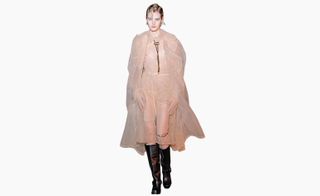
Wanda Nylon: Johanna Senyk, founded in 2012. Stockists worldwide: 40, from Shanghai to Brussels Renowned for gaining a growing cult following with its reinvigoration of rainwear staples. Courtesy of Wanda Nylon
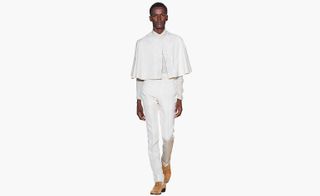
Wales Bonner: Grace Wales Bonner, founded in 2014. Stockists worldwide: 19, from Seoul to Chicago. Renowned for hand-embroidered details and, often, an exploration of African identity. Courtesy of Wales Bonner

Marques'Almeida: Marta Marques and Paula Almeida, founded in 2011. Stockists worldwide: 142, from Beirut to Auckland. Renowned for their 1990s-inspired DIY denim, an aesthetic that has swept both high and mainstream fashion. Courtesy of Marques'Almeida
INFORMATION
For more information, visit the Vetements website, Wanda Nylon website, Vejas website and Wales Bonner website
Wallpaper* Newsletter
Receive our daily digest of inspiration, escapism and design stories from around the world direct to your inbox.
-
 Corner Corner may be London's most unique entertainment destination yet
Corner Corner may be London's most unique entertainment destination yetThe newly-opened venue combines food, jazz and—yes—urban farming beneath one sprawling roof
By Sofia de la Cruz Published
-
 The Wallpaper* Design Issue comes with our Salone del Mobile must-sees
The Wallpaper* Design Issue comes with our Salone del Mobile must-seesThe May 2025 issue of Wallpaper* is on sale now, taking in Milan Design Week, the Venice Biennale, and a very stylish tea party
By Bill Prince Published
-
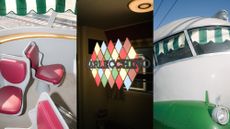 Aboard Gio Ponti's colourful Arlecchino train in Milan, a conversation about design with Formafantasma
Aboard Gio Ponti's colourful Arlecchino train in Milan, a conversation about design with FormafantasmaThe design duo boards Gio Ponti’s train bound for the latest Prada Frames symposium at Milan Design Week
By Laura May Todd Published
